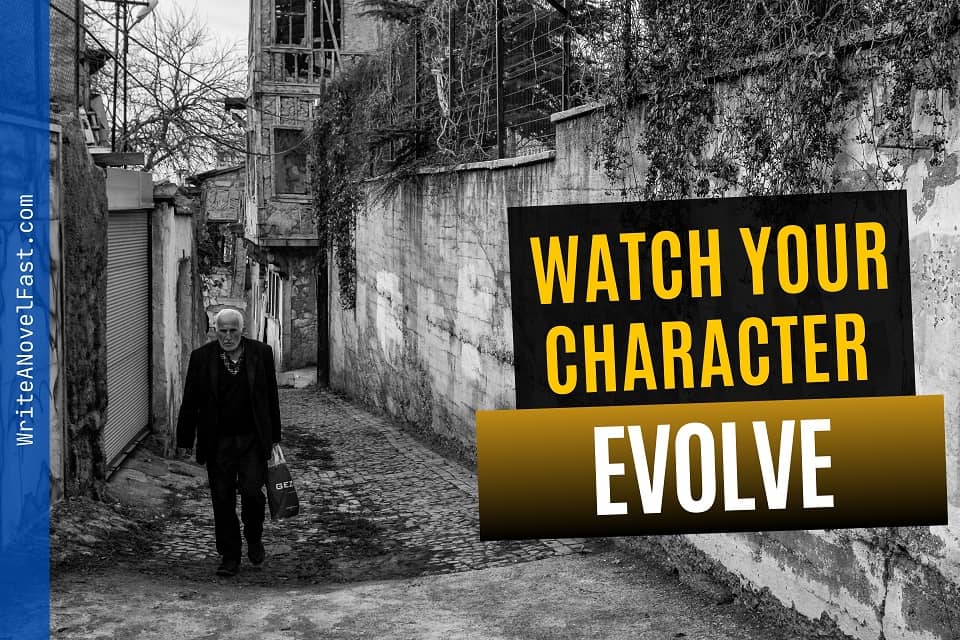You know that moment when you close a book and sit there thinking about the person your favorite character became by the end? Not because of magic or a plot twist, but because they changed. Something about them shifted — maybe subtly, maybe dramatically — and it felt real. That’s the power of character growth. And if you’re wondering how to show character growth in your own writing, you’re in the right place.
Let’s grab a cup of coffee and dig into how to make your characters evolve in ways that are authentic, emotional, and unforgettable.
Table of content:
- What Is Character Growth, Really?
- Start With Flaws, Fears, and False Beliefs
- Growth Is Triggered by Pressure
- In My Own Experience, I Found That…
- Show Growth Through Actions, Not Announcements
- Don’t Fear Setbacks — They Make It Real
- The Final Reveal — Quiet But Powerful
- Wrapping It All Up — Let Your Characters Grow With You
- FAQ: How to Show Character Growth
What Is Character Growth, Really?
At its core, character growth is the internal journey your character takes throughout your story. It’s not just about slaying dragons or saving galaxies (though that’s fun, too). It’s about how those experiences shape who they are — how they see the world, others, and themselves.
Think of Elizabeth Bennet in Pride and Prejudice. Her journey isn’t about the ballrooms and bonnets — it’s about learning to let go of judgment and pride. Or look at Zuko from Avatar: The Last Airbender, whose evolution from villain to hero is one of the most emotionally satisfying arcs in fiction.
So, if you’re trying to figure out how to show character growth, start by asking: Who is my character at the beginning, and who will they be at the end?
Start With Flaws, Fears, and False Beliefs
A character’s growth is only meaningful if they have room to grow. That means giving them something to overcome — a fear, a deep insecurity, or a belief that limits them.
Let’s say you’re writing about a stoic detective who refuses to trust anyone. That flaw can create conflict, tension, and loneliness. But over the course of the story, as they form bonds or face betrayal, that wall can start to crack. Maybe they still struggle, but by the end, they’re willing to let someone in.
Your character’s starting point matters. Without it, the growth at the end won’t land.
Growth Is Triggered by Pressure
Characters don’t grow just because we want them to — they grow because the story demands it. Something has to push them to change.
That something could be:
- A painful loss
- A surprising ally
- A moral dilemma
- A new responsibility
- A complete failure
Let’s go back to Frodo in The Lord of the Rings. He starts off as a quiet Hobbit with zero interest in adventure. But the burden of the Ring, the losses he faces, and the weight of the journey change him in ways that are bittersweet and powerful. That’s not just great plotting — that’s growth born from pressure.
If you’re wondering how to show character growth without it feeling forced, make sure the change is a response to what they’ve been through.
In My Own Experience, I Found That…
…character growth works best when I let it unfold naturally in the first draft — without trying to control every beat. During one of my earlier projects, I had this impulsive, sarcastic heroine who I intended to stay that way. But halfway through writing, she started softening. Not in a cheesy, out-of-character way — but because her experiences demanded it. She saw her flaws reflected in someone else and made a conscious choice to shift.
So, my advice? Let your characters surprise you. Don’t fight it. Their growth might not be what you outlined, but if it feels honest, go with it. Trust the story.
Show Growth Through Actions, Not Announcements
This is the fun part — showing growth without saying, “Look, they’ve grown!” It’s all in the contrast between who they were and who they’re becoming.
Here’s how to do it:
- Decisions: Early in the book, your character lashes out. Later, they pause and choose empathy. That’s growth.
- Dialogue: They speak with more confidence, or maybe they stop talking over others.
- Body Language: From slouching with insecurity to walking with purpose.
- Reactions: They no longer avoid tough conversations. They lean in.
Think about Neville Longbottom. In book one, he’s forgetful and timid. By the final books, he’s standing up to Voldemort — and it feels earned. J.K. Rowling never has to announce it. We see it.
If you’re still not sure how to show character growth naturally, focus on your character’s choices — especially in moments that mirror earlier scenes. Show how they would’ve reacted before vs. how they react now.
Don’t Fear Setbacks — They Make It Real
Growth isn’t a straight line. Sometimes your character will stumble, fall back into old habits, or make a choice they regret. That’s not failure — that’s realism.
Maybe your recovering perfectionist protagonist micromanages a friend’s project again. Or your fearless warrior panics in battle. Use those setbacks to deepen their arc. Because in the real world, we don’t change overnight — we grow in messy, human steps.
And your readers will relate to that. Because they’ve been there, too.
The Final Reveal — Quiet But Powerful
By the end of your story, you don’t need a grand speech to showcase growth. Often, it’s one small, powerful moment.
Maybe your commitment-phobic lead finally says, “I’m not going anywhere.”
Maybe the loner sends a text that says, “I need help.”
Maybe the rebel doesn’t punch — they listen.
Let the final scene reflect their growth in a subtle but satisfying way. Trust your readers to notice. And they will.
Wrapping It All Up — Let Your Characters Grow With You
Learning how to show character growth is one of the most rewarding parts of writing fiction. It’s where your character stops being a name on a page and becomes someone real. Someone who grows, stumbles, learns, and maybe teaches you something in the process.
Don’t rush it. Don’t overthink it. Let it breathe.
Your characters will thank you.
FAQ: How to Show Character Growth
Q1: Can character growth happen off-screen or between books?
Yes, but it’s more powerful when you show it happening on the page. Readers want to witness the transformation.
Q2: Does every character need to grow?
Not necessarily. But your main character usually should. It’s what gives the story emotional depth.
Q3: What if the character changes too fast?
Slow it down. Use turning points, small realizations, and consistent triggers to make the change believable.
Q4: Can growth be negative?
Absolutely. That’s called a negative arc — when a character becomes more selfish, more broken, or more corrupt.
Want help crafting arcs that make your readers cry (in the best way)? Stick around — we’ve got tons of writing guides, character deep-dives, and story love ahead.
Let’s grow together. 💛



